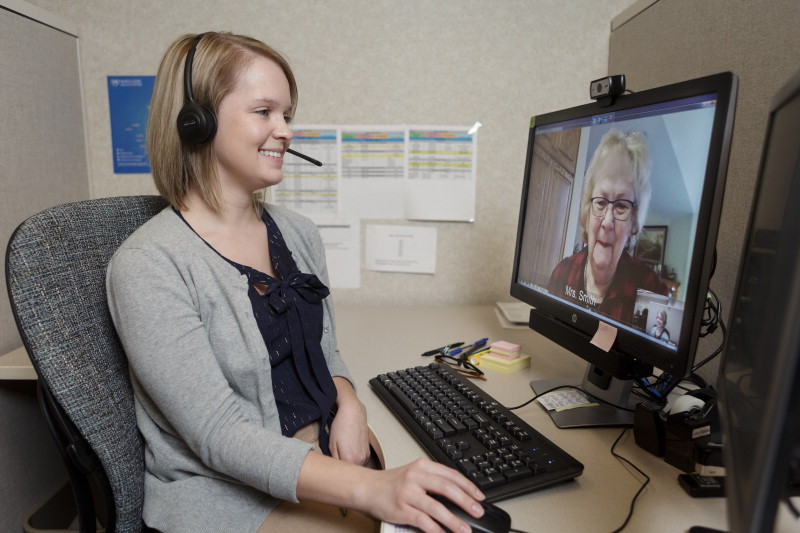
As more and more of our everyday life moves online, you may see more opportunities to work from home or schedule virtual appointments online. Attending doctors’ appointments online is among these growing options. Especially in a critical time like the COVID-19 outbreak, this kind of accessibility is needed now more than ever.
Telemedicine, sometimes called telehealth or digital care, allows patients and doctors to manage and access their health care with the use of a desktop computer, laptop, smartphone, tablet or other technology. Examples of telemedicine can include anything from an app that helps you count your calories to digital patient portals, virtual visits, remote patient monitoring, and hospital at home.
How Does Telemedicine Work?
Telemedicine has improved leaps and bounds over the past few years and already benefits those who live in rural communities or have limited access to transportation by removing the need for in-house visits. For example, patients can request a refill of prescriptions online instead of commuting down to see their provider. But how does one take advantage of its services?
Especially during a time like the COVID-19 pandemic, more doctors’ appointments are being moved digital, even if only temporarily. If your doctor has telemedicine appointment capabilities, you can have a med check or consultation with your doctors online. This is a limited form of telemedicine at the moment, but it is especially convenient if you have a minor illness. Governor Ducey has issued an Executive Order requiring health care insurance companies to expand telemedicine coverage for all services that would normally be covered for an in-person visit. The order helps ensure that Arizonans who may be sick or under home quarantine can access care from their homes and avoid potentially risky trips to a health care provider. It will remain in effect until the termination of the declared public health emergency and applies to all forms of telehealth from telephone to video telemedicine.
When Should I Consider Using Telemedicine?
Telemedicine isn’t limited to just doctor visits and patient portals. If you or someone you know has a more serious ailment, such as diabetes, high blood pressure, heart failure, chronic obstructive lung diseases, or dementia, there are apps and wearable technologies that transfer information and enable your doctors to monitor conditions from afar, such as blood glucose levels, blood pressure, oxygen saturation, or heart rate.
Doctors benefit, too. Unfortunately, smaller offices in rural communities do not have the resources to tackle complex cases, such as patients with neurological conditions like stroke. But with the help of telemedicine, these doctors can consult with specialists from across the world, share scans or test results, diagnose the condition and strategize the best approach to care. This technology is also being used for concussion checks, where coaches can talk to a doctor if they are unsure of a player’s symptoms. In fact, in a Mayo Clinic study, it was found that doctors who used telemedicine technology from afar were able to make the same assessment and diagnosis as doctors who were on site.
Despite this, there are still some limitations that must be considered prior to using telemedicine for virtual doctor visits. One of those limitations is that it may fragment care, which may leave some things overlooked or cause overlapping care. As of now, nothing can fully replace physical provider visits. However, telemedicine is constantly evolving and shows extraordinary promise in making healthcare more efficient and safer, especially during crises such as the COVID-19 pandemic.
Does My Doctor Offer Telemedicine Services?
The best way to know if, and to what extent, your current healthcare provider offers telemedicine services is to ask. The practice administrator or manager should be able to explain what telemedicine services are offered, as well as the associated costs.
Give It a Try
Telemedicine may be a viable option the next time you come down with a case of the sniffles or need a consultation about the use of a certain medication. Check if your current provider offers telemedicine services that are covered under your insurance plan.
Telemedicine doesn’t mean that you’ll never visit a doctor’s office again. But it does make care more accessible and affordable in some cases. Plus, it can definitely help you adhere to social distancing recommendations during this pandemic and reduce the time you spend in your doctor’s waiting room.
Dr. Bart Demaerschalk is a neurologist and the medical director of Mayo Clinic Enterprise Telemedicine at Mayo Clinic in Arizona. He is also the director of the Telestroke and Teleneurology Program, as well as Medical Director for the Cerebrovascular Disease Center.
